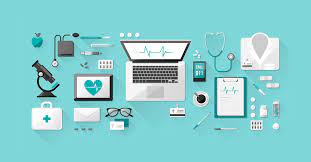
Empowering Healthcare Through Innovative Health Information Technology Solutions
The Impact of Health Information Technology on Modern Healthcare
In today’s digital age, the integration of technology in healthcare has revolutionized the way medical information is stored, shared, and utilized. Health Information Technology (HIT) encompasses a wide range of tools and systems designed to improve the efficiency and quality of healthcare delivery.
One of the key benefits of HIT is the electronic health record (EHR) system, which allows healthcare providers to access patient information securely and in real-time. This enables better coordination of care among different providers, reduces medical errors, and improves patient outcomes.
Telemedicine is another significant advancement in HIT that has transformed healthcare delivery by allowing patients to consult with healthcare professionals remotely through video conferencing or mobile apps. This technology has been particularly valuable in providing care to underserved populations and those in remote areas.
Health information technology also plays a crucial role in data analytics and population health management. By analyzing large sets of health data, providers can identify trends, predict outbreaks, and tailor interventions to improve public health outcomes.
Furthermore, HIT has enhanced patient engagement through patient portals and mobile health apps that enable individuals to access their medical records, schedule appointments, receive reminders, and communicate with their healthcare team conveniently.
Despite its numerous benefits, the adoption of health information technology comes with challenges such as data security concerns, interoperability issues between different systems, and the need for ongoing training for healthcare professionals to effectively utilize these tools.
As technology continues to advance at a rapid pace, the future of healthcare is undoubtedly intertwined with health information technology. By leveraging these innovative tools effectively, the healthcare industry can continue to evolve and provide more efficient, personalized care to patients worldwide.
Top 5 Frequently Asked Questions About Health Information Technology
- What does a health information technology do?
- What is health information technology give examples?
- What is health informatics technology?
- Is health information technology a good career choice?
- What are the three types of health information technology?
What does a health information technology do?
Health information technology (HIT) plays a crucial role in modern healthcare by digitizing and managing patient health information securely and efficiently. A health information technology system facilitates the electronic storage, retrieval, and sharing of medical records, enabling healthcare providers to access up-to-date patient data, track treatment plans, and coordinate care seamlessly. Additionally, HIT tools support decision-making processes by providing real-time insights into patient histories, medication lists, lab results, and imaging studies. By streamlining administrative tasks, improving communication among healthcare teams, and enhancing patient engagement through online portals and telemedicine solutions, health information technology ultimately enhances the quality of care delivery and contributes to better health outcomes for individuals.
What is health information technology give examples?
Health Information Technology (HIT) refers to the use of technology to manage and exchange health information in healthcare settings. Examples of health information technology include Electronic Health Records (EHRs), which store patients’ medical history, diagnoses, medications, treatment plans, and immunization dates in a digital format. Another example is Telehealth, which enables patients to receive healthcare services remotely through video calls or mobile apps. Picture Archiving and Communication Systems (PACS) allow for the storage and retrieval of medical images like X-rays and MRIs electronically. Additionally, Health Information Exchange (HIE) platforms facilitate the sharing of patient information between different healthcare providers securely. These examples illustrate how health information technology plays a vital role in improving patient care, enhancing communication among healthcare professionals, and streamlining healthcare processes.
What is health informatics technology?
Health informatics technology refers to the application of information technology in the healthcare sector to manage and analyze health data effectively. It involves the use of electronic systems and software to collect, store, and share patient information securely, ultimately improving the quality of care and patient outcomes. Health informatics technology plays a vital role in streamlining healthcare processes, enhancing communication between healthcare providers, and facilitating evidence-based decision-making. By harnessing the power of data and technology, health informatics technology enables healthcare organizations to deliver more efficient, coordinated, and personalized care to individuals while advancing public health initiatives on a broader scale.
Is health information technology a good career choice?
Health information technology (HIT) offers a promising career choice for individuals interested in the intersection of healthcare and technology. With the increasing digitization of medical records and the growing emphasis on data-driven healthcare solutions, professionals in HIT play a vital role in improving patient care, streamlining processes, and enhancing overall healthcare outcomes. A career in health information technology provides opportunities for specialization in areas such as electronic health records management, health data analytics, telemedicine, and cybersecurity. As the demand for skilled HIT professionals continues to rise, pursuing a career in this field can lead to rewarding job prospects and contribute to shaping the future of healthcare delivery.
What are the three types of health information technology?
Health information technology encompasses a diverse array of tools and systems that play a crucial role in modern healthcare. The three main types of health information technology are Electronic Health Records (EHRs), Telehealth, and Health Information Exchange (HIE). EHRs enable healthcare providers to digitally store and access patient information, promoting efficient care coordination and reducing medical errors. Telehealth facilitates remote patient consultations through video conferencing or mobile apps, expanding access to healthcare services. HIE allows for the secure sharing of patient information between different healthcare organizations, enhancing continuity of care and improving outcomes. These three types of health information technology collectively contribute to a more connected, efficient, and patient-centered healthcare ecosystem.



